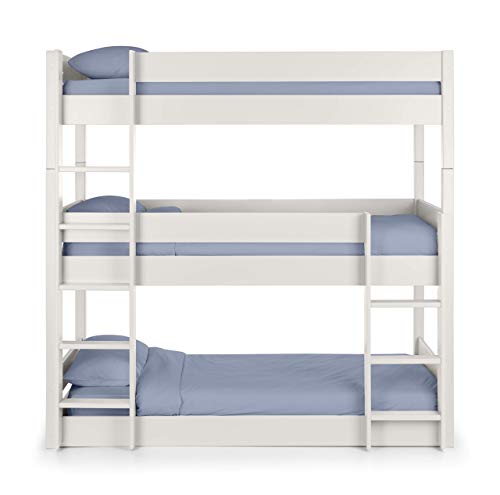Bunk Bed Online Explained In Fewer Than 140 Characters

How to Shop Bunk Bed Furniture
Bunk beds are a great option to save space in the children's room. There are a variety of styles available, from desks with attached to stairs bunks.
It can be a challenge to pick the right bunk bed for your child. It's crucial to choose the right bunk bed that both of you both like. It's also important to choose the appropriate style, construction and size.
How to Choose the Best Bunk Bed
There are plenty of various bunk beds to pick from, but you must to make sure that you choose the best one for your child. When selecting the most suitable bunk beds for your child, it's important to take into account the bed's height and the size of the room.
The bunk bed you select is one that is comfortable for your child. It should be secure, and it should have plenty of storage. It should also include a mattress that is suitable for your child's age as well as needs.
It isn't always easy to select the right bunk beds but you should consider the way your child will be using them and what features they desire. Consider adding a trundle to provide additional sleeping space or drawers to store things.
Take into consideration the material the bunk bed frame is composed of. The majority of bunk beds are made from wood however, some are made from metal, too. This could be a fantastic alternative for your child's room however, it might not be as durable as wood.
Bunk beds are a great way to give your child their own space in their bedroom, and they are often decorated to suit their personality. Your child will be more relaxed and have the chance to express themselves when they have their own space.
A bunk bed is a cheap and practical option for your family, whether you're building a new house or renovating one you already have. It can be used in guest rooms as well as a kid's bedroom or a cabin or vacation home.
Stairs or Ladders
Bunk beds can be found in a variety of styles, shapes, and configurations. It is essential to select the bunk bed that best suits your lifestyle and style and your child's needs.
You may want to consider a full-over-full bed with stairs which double as storage. These kinds of beds are more elegant and can free up a considerable amount of space.
Stairs are more likely to be safer than ladders, especially for children younger than. They have a wider step, and a sturdy railing that protects your child as they climb. Some have grooves that help stop your child from sliding.
A bunk bed with stairs is a safe comfortable and practical option for your children. It also saves space in the space and can be decorated in a variety of attractive styles.
If you opt for bunk beds that have an incline, ensure that the rungs of the ladder aren't too narrow. You could also add a ladder cushion to make it more comfortable for your child.
Ladders are easier for young youngsters to climb, but they can be more difficult for older children. They're also more expensive than stairs, which is why it's important to decide whether you're willing to shell out the money to buy a ladder.
Once the bunk bed is assembled and installed, teach your child how to use it safely. When climbing, it is important to use both hands and to face the stairs or ladder. It is also essential to supervise your child while they use the bunk bed.
Age of the child
The age of your child is a major aspect to consider when choosing a bunk bed. Children grow quickly, and you need to think about their security, happiness, and sleeping habits when making a decision about whether you should purchase a bunk bed or not.
In general it is recommended that children be at least six years of age to be able to sleep on the top bunk. This is because they are more likely to be able to climb up and down the ladder, or remain on the mattress at night.
It is important to take into account the maturity level of your child and their comfort level with heights. If your child is frightened of being on a higher bunk, you may think about an option with a lower level.
Also, you need to take into consideration the amount of available floor space in your bedroom. Measure the ceiling and ensure that the top and bottom bunks will fit properly. You should leave at a minimum 30 inches (2.5 feet) of space between the beds and the ceiling to stop your child from hitting their head against the roof or the top bunk while they sit up.
It is also recommended to look for bunk beds that come with additional safety features. A majority of bunk beds feature guard rails along the sides that stop children from falling off the top bunk or becoming trapped in the bottom bunk.
Floor Space
Bunk beds are an excellent way to save room, regardless of whether you have one or two. They make room to accommodate other furniture, for example, a desk or play area, and give children more room to move around their bedroom.
Bunk beds can be built up to three inches high, and are usually available in a variety of configurations to suit your needs. Some styles are built for guests, while others include a desk as well as storage underneath.
If you need to reduce the floor space, you should consider bunk beds that can be placed horizontally rather than vertically. This might not be feasible however it's the best place to begin your search.
When choosing the right bunk beds, it's crucial to take into consideration your ceiling heights. The majority of standard ceilings are between 8 to 9 feet tall but there are a number of loft and bunk bed designs with lower heights that can be incorporated into smaller rooms.
To get the most benefit of a bunk bed you need to think about the most beneficial features and how it will integrate with the rest of your bedroom design. For instance, you'll need to ensure that the top bunk is equipped with a ladder or guard rails, and the bottom bed has under-bed drawers. You should consider what your child's needs are for the beds. Will they sleep in the top bunk for the majority of the time, or do they require a desk with storage underneath the bottom bed?
Style

Bunk beds are available in a variety of different styles and can be made to fit the space of your child's bedroom. They are also an excellent way to save the floor space in your child's bedroom, especially if you are short on space.
There are a variety of bunk beds to choose from that range from standard or basic models to loft beds with desk space. If you require more storage space, there are bunk beds that have built-in drawers or bookcases.
The best bunk beds are constructed using solid wood, a sturdy framework, and comfortable mattresses. The best mattresses for bunk beds are are between 5 and 6 inches thick. This will allow for the guard rails that are above the mattress to be seen and increase security.
When you are buying bunk beds be sure to look for security features such as a long or short guard rail frame that attaches to the bed's upper. This will prevent your kids from falling out of bed while sleeping.
Some bunk beds include a short ladder attached to the bottom and upper rails. This ladder allows your child access to drawers under the bed, and is able to trundle while not getting out of their way.
You can also select from a wide variety of mattresses to ensure that your child gets the support and support they require. There are many options available on the market. You can choose from hybrid foam to latex. You can also purchase a bunk bed with a slide to provide your child with a thrilling experience when they awake.
Safety
A bunk bed is an enjoyable and thrilling addition to any bedroom however, it's crucial to think about safety when purchasing one. The safety features of a bunk bed like guard rails and ladders, are designed to stop accidents or injuries caused by falling in the bed, entrapment, or structural failure.
A safety railing should be placed on all four sides of the top bunk. This barrier prevents children from falling and getting injured from the top bunk.
It should be erected in a way that the space between the guardrail and the sides of the bed is no wider than 3 1/2 inches. This will prevent your child from rolling underneath the bed when they sleep.
Also, make sure that the guardrails are 16cm higher than the mattress to prevent your child from slipping out of the bed. The mattresses on the upper and lower bunks should also be placed snugly across the four sides of the bed, and should not be more than 15cm.
If you're in the market for a bunk bed, be sure it is built to meet the strict standards established by your country's security commission. bunk bed tree house cover all aspects of bunk beds including their construction and design. They also pay attention to the gaps and spaces that could easily trap tiny arms, legs and heads.
